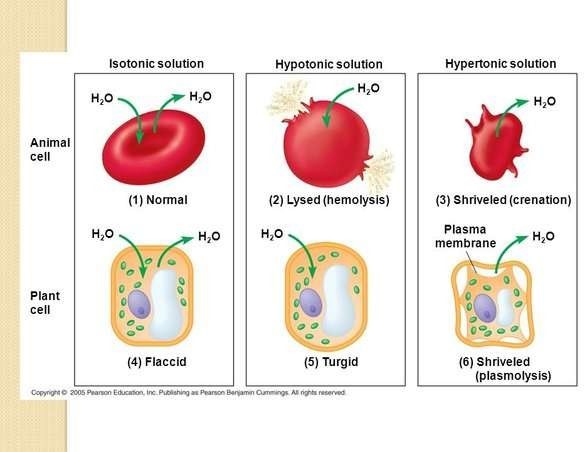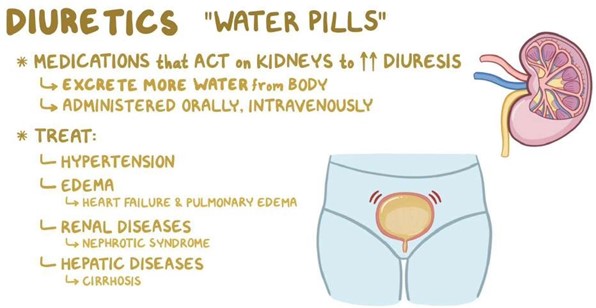A client is receiving intravenous fluid therapy with 0.9% sodium chloride solution.
The nurse understands that this type of solution is classified as:
Hypotonic.
Isotonic.
Hypertonic.
Colloid.
Colloid.
The Correct Answer is B

An isotonic solution has the same concentration of solutes as the blood plasma. 0.9% sodium chloride solution is an example of an isotonic solution.
It is used to supply water and salt to the body and to prevent hypotension induced by spinal anaesthesia.
Choice A is wrong because a hypotonic solution has a lower concentration of solutes than the blood plasma.
It can cause water to move into the cells and cause them to swell.
Choice C is wrong because a hypertonic solution has a higher concentration of solutes than the blood plasma.
It can cause water to move out of the cells and cause them to shrink.
Choice D is wrong because a colloid solution contains large molecules that do not pass through the capillary walls.
It is used to increase the blood volume and pressure in cases of shock or severe blood loss.
Nursing Test Bank
Naxlex Comprehensive Predictor Exams
Related Questions
Correct Answer is A
Explanation

Fluid overload, also called hypervolemia, is a condition in which the body has too much water.
It can cause edema, hypertension, shortness of breath, and cardiovascular problems.
Diuretics are medications that help the body remove excess fluid through urine.
They are commonly used to treat fluid overload caused by heart failure, kidney failure, cirrhosis, and other conditions.
Choice B is wrong because encouraging increased fluid intake would worsen the fluid overload and increase the risk of complications.
Choice C is wrong because providing a high-sodium diet would also worsen the fluid overload and increase the risk of complications.
Sodium is an electrolyte that regulates fluid balance in the body.
Excess sodium intake can cause water retention and increase blood pressure.
Choice D is wrong because elevating the affected extremities is not an appropriate intervention for fluid overload.
Elevating the extremities can help reduce swelling caused by local factors such as injury or inflammation, but it does not address the underlying cause of fluid overload.
Correct Answer is B
Explanation
Serum creatinine is a waste product that comes from muscle activity and is normally removed by the kidneys.
When the kidneys are damaged, the serum creatinine level rises.
The glomerular filtration rate (GFR) is a measure of how well the kidneys are filtering the blood and it is calculated from the serum creatinine level.
A normal GFR is 60 or more, while a GFR below 60 may indicate kidney disease.
Therefore, monitoring the serum creatinine level and the GFR can help assess the renal function in CKD.
Choice A is wrong because blood glucose level is not a direct indicator of renal function, although high blood glucose can damage the kidneys over time.
Choice C is wrong because serum albumin level is not a specific marker of renal function, although low serum albumin can be caused by protein loss in the urine due to kidney damage.
Choice D is wrong because white blood cell count is not related to renal function, but rather to immune system activity and infection.
Normal ranges for serum creatinine are 0.6 to 1.2 mg/dL for men and 0.5 to 1.1 mg/dL for women.
Normal ranges for GFR are 90 to 120 mL/min.
Normal ranges for serum albumin are 3.4 to 5.4 g/dL1.
Normal ranges for white blood cell count are 4,000 to 11,000 cells per microliter.
Whether you are a student looking to ace your exams or a practicing nurse seeking to enhance your expertise , our nursing education contents will empower you with the confidence and competence to make a difference in the lives of patients and become a respected leader in the healthcare field.
Visit Naxlex, invest in your future and unlock endless possibilities with our unparalleled nursing education contents today
Report Wrong Answer on the Current Question
Do you disagree with the answer? If yes, what is your expected answer? Explain.
Kindly be descriptive with the issue you are facing.
